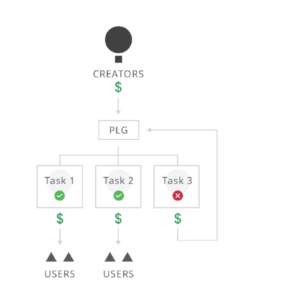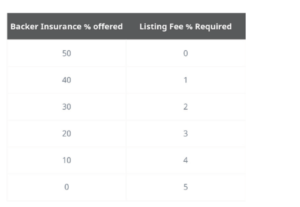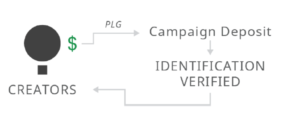What is Crowdfunding?
If you are a regular on any social media platform worth it’s salt, you couldn’t possibly be unfamiliar with the global phenomenon called crowdfunding that has swept over our generation. For the uninitiated, crowdfunding refers to the process of funding a project or enterprise by means of small sums of money provided by a large number of people. The entrepreneurs try to convince people to invest in their project, without incurring debt or handing out shares. This is known as product crowdfunding. The alternative, where the investors receive shares of the company while its still in its early stages, is called equity crowdfunding. As per Pledgecamp’s whitepaper, the total amount raised through crowdsourcing platforms in the year 2015 was a staggering USD 34 billion. According to estimates, this number can grow anywhere from USD 300 billion to USD 1.2 trillion in the near future.
Any crowdfunding activity needs an organizer, or a ‘platform’, which brings together the person or group looking for funds to implement an idea, or ‘creators’, and the people who are willing to fund the idea, or ‘backers’. The leading crowdfunding platform, Kickstarter, collects over USD 1.3 million in pledges every single day. Notable crowdfunding projects include Occulus Rift — a completely immersive virtual reality system, Pebble Smartwatch — one of the pioneering projects in the smartwatch industry, and Star Citizen — an online space trading and combat video game. Musician Amanda Palmer also resorted to crowdfunding in 2012 to raise USD 1.2 million for producing a new music album.
Crowdfunding enables people to invest in projects that excite them. Successful completion of a project that they have backed leads to a sense of immense satisfaction and gratification since it wouldn’t have been possible without their help. In some cases, they also actively participate in the projects by providing ideas or feedback, telling friends and acquaintances about the project, and convincing others to contribute as well. The initiators of the project, on their part, don’t have to waddle through the murky waters of VC funding in order to kickstart their idea. Everything about crowdfunding seems rosy till now! But just when you begin to wonder what might possibly go wrong here, let me introduce you to the dark side of crowdfunding.
Risks associated with Crowdfunding
The greatest risk here is the question of trust. A project which purposefully or inadvertently fails to live up to its promise negatively impacts the whole economy of crowdfunding, as it can potentially discourage backers from ever investing in crowdfunded projects again. Since the creators raise funds for the project at the onset, more often than not, they are not legally obligated to stick to any pre-determined roadmap. Constant delays have marred many such crowdfunding ideas. For example, Coolest Cooler, which raised USD 13 million in 2014, kept on shifting milestones, much to the frustration of the backers, till it came under investigation by law agencies in 2017. Even today, it is yet to fulfill all its commitments
The crowdsourcing platforms of today play an extremely passive role in the entire life cycle of projects that are listed on their platform. They charge listing fees from projects, which is typically 5%. Once they pocket this fee, there is no further motivation or obligation for them to keep track of the projects. In fact, with this business model, crowdfunding platforms actually seek to list as many projects as possible. The novelty of the idea or the credibility of the creators takes a backseat. Without any sort of regulation, there’s always the risk of scam or misuse of funds.
Crowdfunding also suffers from the ills of centralization. The listing platforms are centralized systems, as they have to do at least a basic screening of projects that apply for listing. Processing of payments is another trouble, as most of these platforms require that the potential backers possess a credit card. Moreover, there are country-specific restrictions too both on the creators and the backers. This is a huge impediment that is preventing crowdfunding from reaching its true potential.
Pledgecamp’s Solution
Pledgecamp is looking to integrate blockchain technology into the crowdfunding economy. They will implement pro-backer measures to ensure that projects are accountable to the people who have invested their hard-earned money in them. Pledgecamp will introduce its native token, called Pledge Coin, or PLG. PLG tokens will be used for all sorts of payments on the network. It will also be used to reward community members who provide value to the network by means of various services. Like any other crypto-currency, transactions done through PLG tokens will be borderless and transparent and allow people without bank accounts to participate as well.
Campaign Deposits
To list a project on Pledgecamp’s platform, creators would first have to deposit a certain amount of PLG tokens on the blockchain, instead of paying listing fees. They would be able to earn back this deposit part by part as and when they perform activities that help in making the backers more educated about the project and build trust among the backers. Such activities can include uploading of business documents, providing identity verification, or hosting video sessions to interact with the backers and answer their queries. If the creators are unwilling to perform any of these activities, it would implicitly inform the backers that the project under consideration might need a more thorough review from their end. Creators who are unable to pay the deposit would also have the option of performing certain tasks and earning the required PLG tokens.

The Campaign Deposit model
This system of Campaign Deposit will completely replace the requirement of any sort of manual screening of projects by the platform, which is a centralized approach, to begin with. Instead, Pledgecamp takes a completely decentralized approach by empowering the backers to make an educated decision about the legitimacy of a project. Users who help in identifying scams and frauds will be rewarded in PLG tokens, from the deposits of all such projects. In a nutshell, creators looking to make a quick buck through scams risk losing their entire deposit to the platform, while honest projects will end up getting listed without paying any fees at all.
Backer Insurance
In a first of its kind, Pledgecamp will offer Backer Insurance, wherein a certain portion of the campaign funds will be held in escrow via a smart contract till the time the backers decide to release it. This release of funds will be decided by backers’ votes. As the day of a vote approaches, the creators would have to demonstrate to the public the progress they have made and also justify the requirement for more funds. If they are able to convince the backers, then a portion of the remaining funds will be released. However, if the backers don’t have any confidence left in the project, then the remaining funds would be distributed back among the backers. So, the backers would get back a part of the funds that they had paid at the onset of the project. Compared to Pledgecamp, on any other crowdfunding platform, the backers would have lost their entire funds to a project which turned out to be a scam.
As an incentive to the creators, their campaign deposit fees depends on how much of the funds they are willing to lock up in the Backer Insurance, as shown below.

Backer Insurance offered vs Listing Fee required
By rewarding projects which agree to lock up a greater portion of their revenue, Pledgecamp is paving the way to build up an ecosystem of trust and fairness. It should be noted here that backers do not have any voting rights as to the management level decisions taken by the creators. They can only vote to approve whether the milestones defined in the initial project sales pitch have been met on a timely basis.
Smart Crowd & Decentralized Incentives
Pledgecamp will allow the backers to take a more active role in the campaign, and turn into what they refer to as the Smart Crowd. Creators might be in need of various skill sets, and some of the backers might already be in possession of such skills. Pledgecamp will provide a platform for creators not only to pitch their idea but also to potentially search for such talents as they would require amongst the backers. The creators would be able to pay such backers through PLG tokens. The creators might also decide to pay users for participating in project related activities, such as disseminating information about the project through social media or taking surveys related to the project.
Pledgecamp will not earn from the listing fees paid by projects as other crowdfunding platforms do. Instead, the fees would be earned by the users who maintain the network, actively track the progress of various projects, and provide value to the ecosystem. This will further encourage the backers to act for the enhancement of the Pledgecamp ecosystem. The team behind Pledgecamp will also earn revenue by providing value-added services to users on the network. In other words, apart from the listing of projects, Pledgecamp will act as a participant in the network like any other user, further decentralizing the entire operation.
The Pledgecamp Economy
Pledgecamp is trying to implement a self-sustainable economic framework, with the blockchain acting as the pivot. Their aim is to bring together people from different parts of the globe and enable them to connect, collaborate and transact directly, using the PLG token as the means of payment. All such transactions will be recorded on the blockchain and completely transparent to the users. As mentioned in their whitepaper, their vision is to create what is called a ‘gig economy’, where the creators will be able to employ users for a short period of time as and when required. Similarly, it will also enable the users to earn payments in return for the services that they offer. The salient features of this initiative are explained below.

The Gig Economy model
Market Network –
This market network will help bring creators and 3rd party vendors together. Moreover, the creators will be able to review the past performance and work experience of these vendors, as all this information will be recorded on the blockchain. This will help the creators make an educated decision when choosing vendors. The service providers too will have a host of projects to explore and choose from.
Developer Applications –
Pledgecamp is planning to provide a host of software kits and services that will help the entrepreneurs in raising funds for and executing their projects. On top of it, Pledgecamp will create a platform where users will be able to co-create and share software plugins and tools. When other users decide to use any of these software applications, the developers will be paid through tokens.
Knowledge Center –
Pledgecamp will also create a user-curated knowledge center, specially targeted at the various aspects of entrepreneurship, along the lines of Wikipedia. Here, users would be able to post articles, ask questions, and rate the content created by other users. This rating will be used to assign reputation scores to users. The advantage of these reputation scores is that it will motivate users to create meaningful and accurate content.
Content Moderation –
Although the Pledgecamp ecosystem will be completely decentralized, there would be a need for moderation on the platform. Moderators would be required to remove campaigns that are in violation of the terms of service. They would be chosen through staking or randomly. Honest moderators would be paid through PLG tokens in return for their services, while rogue moderators would be removed from the network. This will incentivize the moderators to act for the benefit of the network.
Camp Shares
Pledgecamp plans to introduce another token, known as Camp Share (CS) token, in order to reward users for their contribution to the platform. Users will be able to acquire CS tokens by staking an equal number of PLG tokens. As already mentioned, Pledgecamp would not keep the listing fee paid by projects. Instead, this listing fee would be distributed amongst CS holders. As the Pledgecamp platform does more business, the listing fee distributed to the users will increase, which will, in turn, drive up the price of CS/PLG tokens.
CS holders would also be able to perform some specific activities and get paid in return. These services would mainly include moderation activities, such as removing dubious campaigns from the platform or improper entries from the Knowledge Center. Only CS holders would be able to perform these activities since they would have a vested interest in ensuring that the platform succeeds, as the value of their CS holding would be directly linked to the popularity of the platform. In a nutshell, the CS tokens would incentivize the users to act in a manner which would benefit both them and the overall platform.
Team Pledgecamp
The core team of Pledgecamp consists of crowdfunding and business experts with deep industry insight and experience. They have launched 4 consumer products and raised nearly USD 2.5 million over the last 5 years. Their CEO, Jae Hoon Choi, graduated from the University of California, Berkeley, with a degree in Economics and minor in Business Administration. A former investment banker and manager at Ustream, Jae is also an angel investor and advisor to a number of blockchain projects (such as Robinhood, Circle, and Wish). He leads the strategy, business development and finance teams in Pledgecamp.
Eddie Lee is the President of Pledgecamp and in charge of leading the product, branding, and marketing divisions. He has also graduated from the University of California, Berkeley, with a dual degree in Business Administration and Rhetoric. He has been an entrepreneur of blockchain and crowdfunding projects. Sam Pullman, the CTO, leads blockchain development, product architecture and project management. He graduated from the University of California, Berkeley, with a degree in Electrical Engineering and Computer Science. He is a blockchain and smart contract expert and has experience leading the development of websites, mobile apps, firmware, and so on.

Core team of Pledgecamp
Pledgecamp also has an enviable list of advisors and sponsors. Most notable among them is Randi Zuckerberg. Popularly known as the sister of Mark Zuckerberg, she is a leader in her own right, being the founder and CEO of Zuckerberg Media. This is Randi’s first involvement with a company working on blockchain technology. She is also one of the advisors of Huobi Chain. You can read about the other team members, advisors and sponsors here.
Parting Thoughts
Pledgecamp is trying to disrupt the crowdfunding industry by using blockchain technology, to ensure that anyone anywhere can have access to crowdfunding opportunities, and providing backer-protection measures through smart contracts. This sets Pledgecamp apart from the current leaders in crowdfunding, such as Kickstarter and Indigogo, which have absolutely zero backer-protection schemes and are only concerned about making money through listing fees. Projects such as KickICO and Acorn Collective are other crowdfunding platforms which are trying to integrate blockchain technology. However, these projects are mainly trying to make crowdfunding accessible to all corners of the world through the means of cryptocurrency. They currently do not offer any security mechanisms either.
More than being just a platform where budding entrepreneurs list their projects, Pledgecamp’s vision includes an ecosystem which will bring together creators and 3rd party vendors, and where users will play an active role in ensuring that the platform keeps on operating smoothly. This is truly something out of the box. With crypto gradually seeping into mainstream adoption, if they can implement their vision properly, then Pledgecamp can become the leading crowdfunding platform in a few years’ time. One concern is that they haven’t published any details regarding their roadmap. They have only mentioned in their website that they are focussing on completing the platform along with their partners Meta Lab and Mousebelt and that they are targetting a summer 2019 launch. However, it’s still early days for them, and I believe that the roadmap would be up on their website in due time.
To learn more about PledgeCamp visit their website, twitter or telegram
